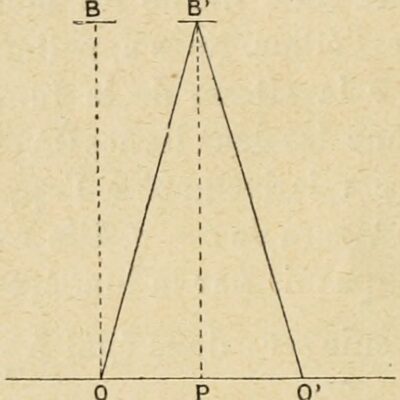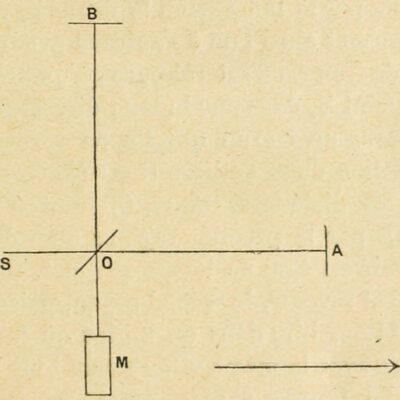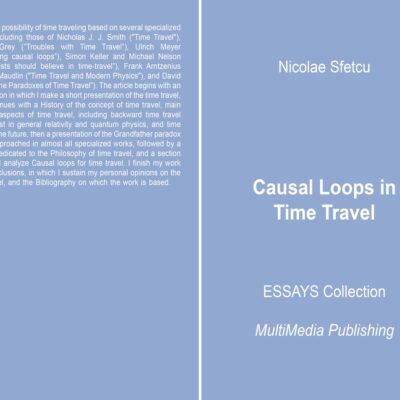 What will happen when operators respectively placed at 0 and at A want to measure the speed of light by noting, on the clocks tuned together which are at these two points, the moment of departure, the moment of arrival, the time therefore that it takes for light to cross the interval?
What will happen when operators respectively placed at 0 and at A want to measure the speed of light by noting, on the clocks tuned together which are at these two points, the moment of departure, the moment of arrival, the time therefore that it takes for light to cross the interval?
We have just seen that the zeros of the two clocks have been placed in such a way that a ray of light always appears, to those who consider the clocks to be concordant, to take the same time to go from 0 to A and back. Our two physicists will therefore naturally find that the time of the journey from 0 to A, counted by means of the two clocks placed respectively at 0 and at A, is equal to half of the total time, counted on the clock at 0 alone, of the complete journey to go and back. However, we know that the duration of this double journey, counted on the clock at 0, is always the same, whatever the speed of the system. It will therefore still be like this for the duration of the single journey, counted by this new process on two clocks: we will therefore still see the constancy of the speed of light. The motionless observer in the ether will also follow from point to point what has happened. He will realize that the distance traveled by the light from 0 to A is the distance traveled from A to 0 in the ratio of c + v to c -v, instead of being equal to it. He will note that, the zero of the second clock not matching that of the first, the outward and return times, which appear equal when the indications of the two clocks are compared, are in reality in the ratio of c + v to c – v. There was therefore, he will say, an error on the length of the route and an error on the duration of the journey, but the two errors compensate each other, because it is the same double error which once governed the adjustment of the two clocks on top of each other.
Thus, whether we count time on a single clock, in a specific location, or whether we use two clocks distant from each other, in both cases we will obtain, inside the mobile system S’, the same number for the speed of light. Observers attached to the mobile system will judge that the second experiment confirms the first. But the motionless spectator, seated in the ether, will simply conclude that he has two corrections to make, instead of one, for everything relating to the time indicated by the clocks of the system S’. He had already noticed that these clocks worked too slowly. It will now be said that clocks staggered along the direction of motion further delay each other. Suppose once again that the mobile system S’ had detached itself, like a double, from the immobile system S, and that the dissociation had taken place at the moment when a clock H’0 of the mobile system S’, coinciding with the clock H0 of the system S, scored zero like it. Let us then consider in the system S’ a clock H’1, placed in such a way that the line H’0H’1 indicates the direction of movement of the system, and let us call l the length of this line. When the clock H’1 marks the time t’ the immobile observer now rightly says that, the clock H’1 delaying by a dial interval lv/c2on the clock H’0 of this system, it has elapsed in reality a number t’ +-lv/c2 of seconds of the system S’. But it was already known that, given the slowing down of time due to the effect of movement, each of these apparent seconds is worth, in real seconds, 1/√(1 – v2/c2). He will therefore calculate that if the clock H’1 gives the indication t’, the time actually elapsed is (t’ +-lv/c2)/√(1 – v2/c2). Consulting moreover at this moment one of the clocks of his immobile system, he will find that the time t marked by it is indeed this number.
But, even before realizing the correction to be made to move from time t’ to time t, he would have noticed the error that we commit, inside the mobile system, in the assessment of simultaneity. He would have caught it on the spot while assisting in the adjustment of the clocks. Let us consider in fact, on the indefinitely extended line H’0H’1 of this system, a large number of clocks H’0,H’1,H’2,… etc., separated from each other by equal intervals l. When S’ coincided with S and was therefore stationary in the ether, the optical signals going back and forth between two consecutive clocks made equal paths in both directions. If all the clocks thus agreed between them marked the same time, it was at the same moment. Now that S’ has detached itself from S through the effect of splitting, the person inside S’, who does not know that he is moving, leaves its clocks H’0,H’1,H’2,… etc. as they were; he believes in real simultaneities when the hands indicate the same number on the dial. Moreover, if he has a doubt, he carries out the adjustment again: he simply finds confirmation of what he had observed in immobility. But the motionless spectator, who sees how the optical signal now travels further to go from H’0 to H’1, from H’1 to H’2, etc. than to return from H’1 to H’0, from H’2 to H’1, etc., realizes that, for there to be real simultaneity when the clocks mark the same time, it would be necessary for the zero of clock H’1 to be moved back by lv/c2, for the zero of clock H’2 to be moved back by 2lv/c2, etc. From real, simultaneity has become nominal. It curved in succession.
Source: Henri Bergson, Durée et simultanéité : à propos de la théorie d’Einstein, Deuxième édition, qugmentée, Paris, 1923. Translation and interpretation Nicolae Sfetcu. © 2024 MultiMedia Publishing













Leave a Reply